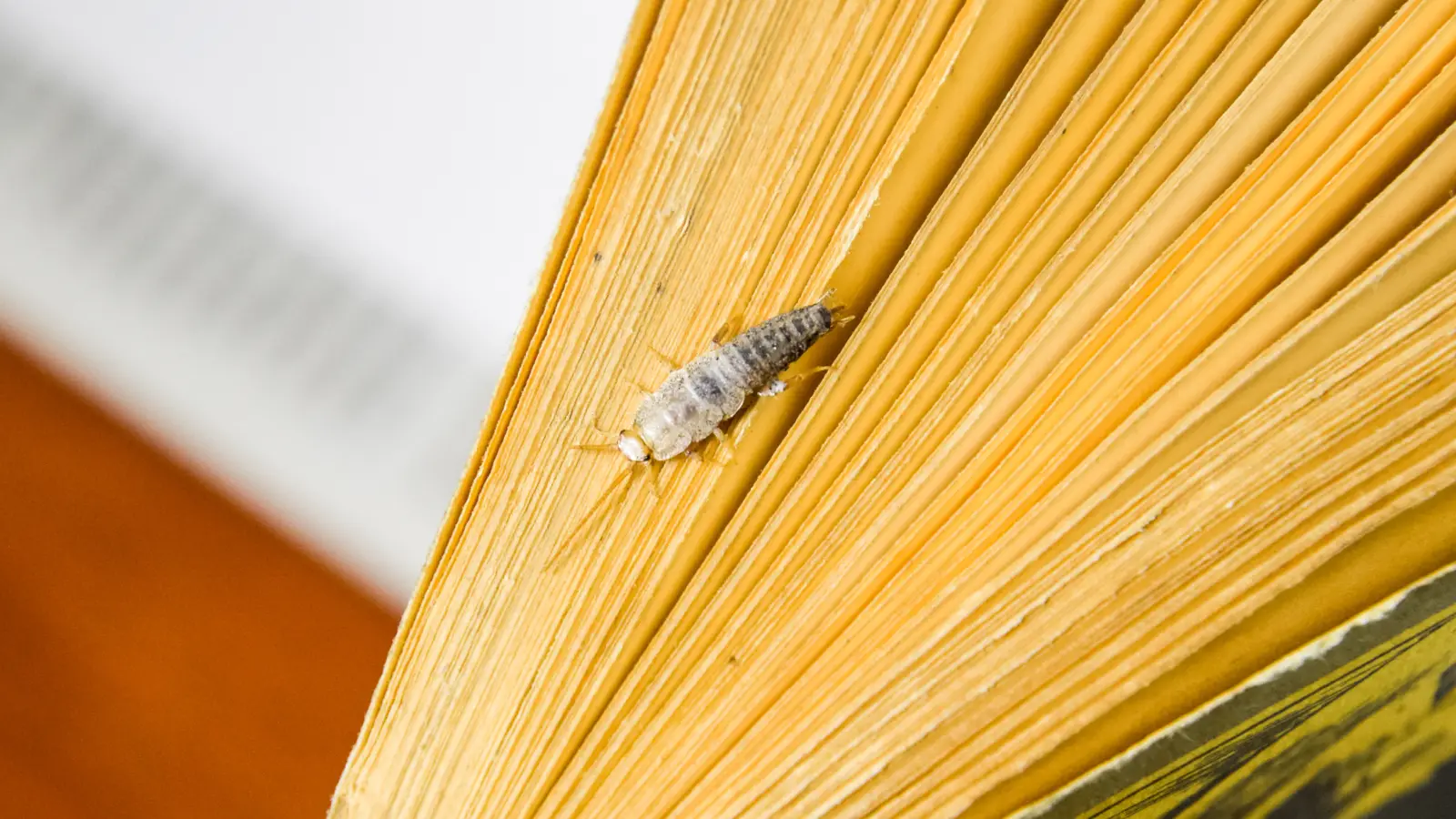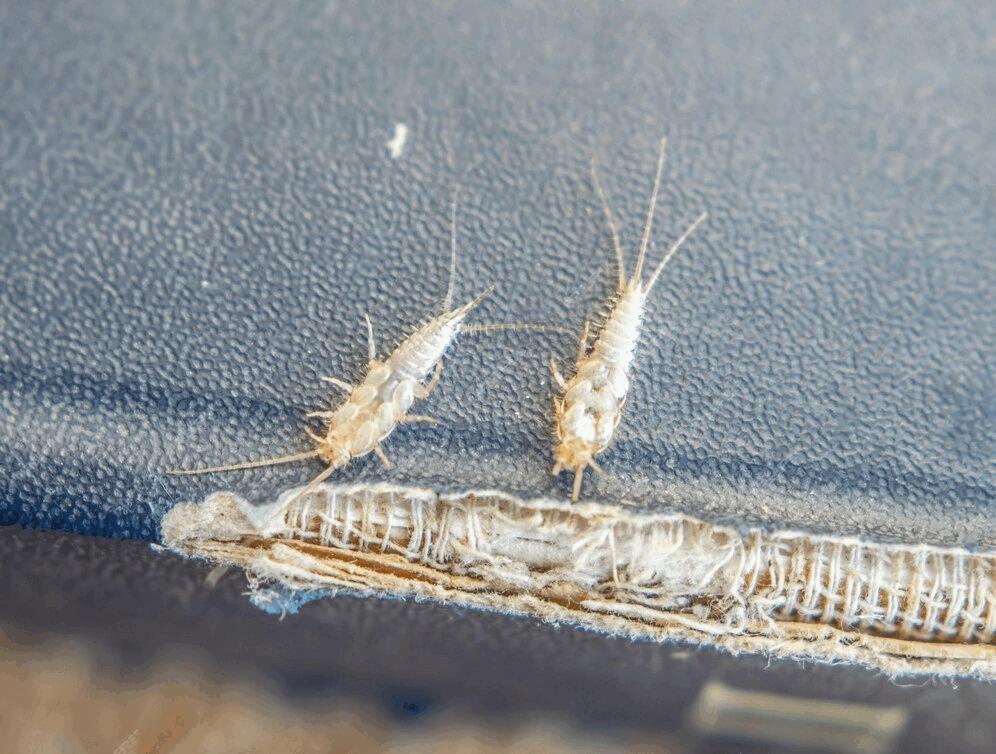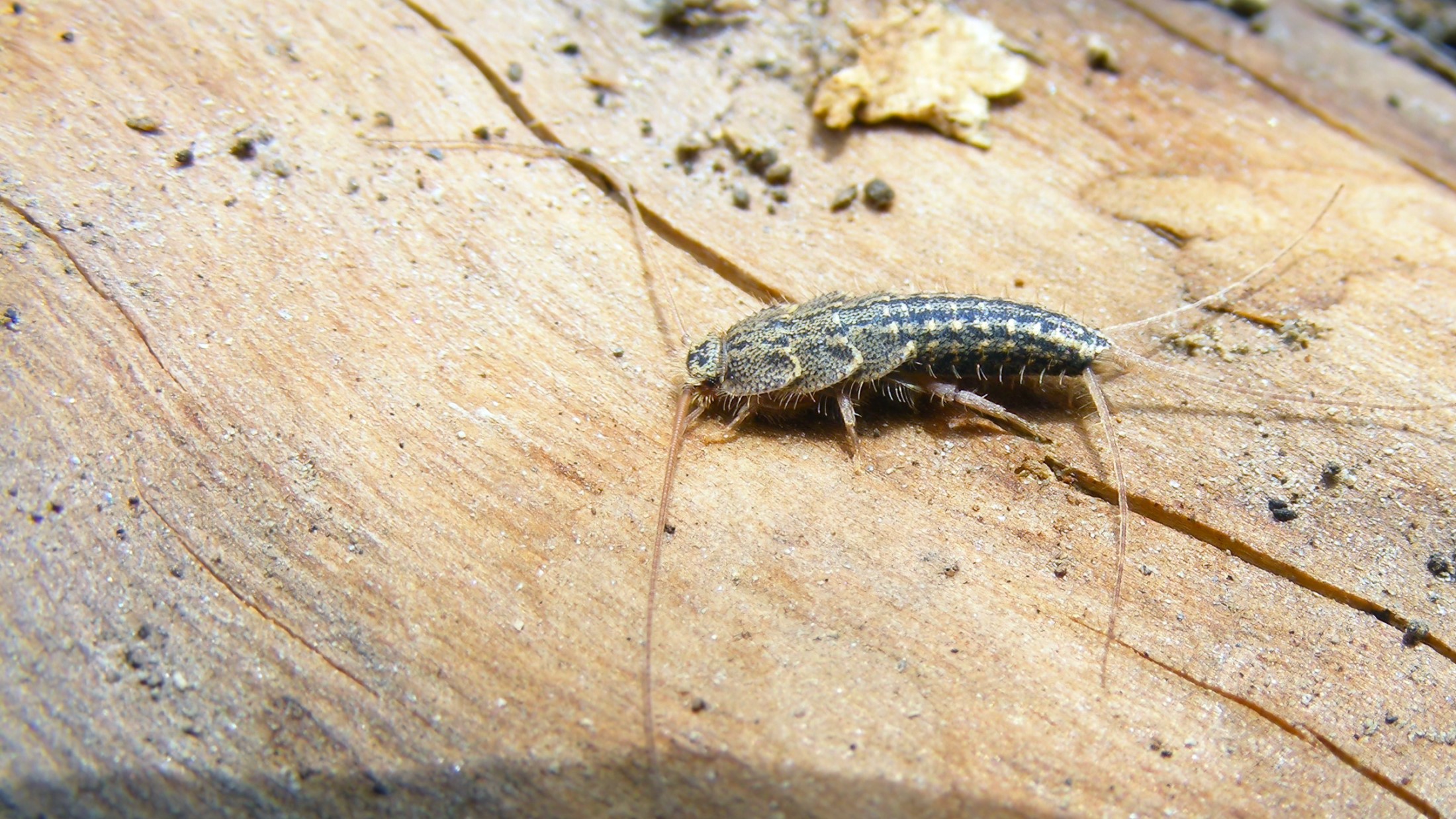SILVER PROBLEMS?
WE’LL FIX THEM IN NO TIME!
Silverfish Treatments
Terms & Conditions Apply
From
$198
Silverfish feed on household products containing starch
Seeing lots of silverfish around your home?
With their elongated, tapered body and shiny silver scaly appearance, it’s no wonder how silverfish got their name. However, these pests don’t swim. Instead, they often hitchhike into your home through contaminated food items and feed on all polysaccharide-rich household products.
This can include starched cotton clothing, paste, wallpaper glue, photographs and bookbinding. However, they’ve also enjoyed other materials such as linen, silk, paper and synthetic fibres. Your belongings won’t be safe when hungry adult silverfish are nearby.
If you notice more silverfish crawling around the place, you’re experiencing silverfish infestation. It’s best to act quickly before the problem worsens. Contact Allstate and speak to a fabric silverfish pest control technician today.
What attracts silverfish to your home?

Silverfish are fast-moving, nocturnal insects attracted to several factors in the home. Understanding what draws them in is vital to preventing infestations.
Moisture and Humidity
Silverfish thrive in damp, humid environments with high moisture levels. They are commonly found in bathrooms, kitchens, laundry rooms, and other areas with excess moisture. Repairing leaks, using dehumidifiers, and improving ventilation can make your home less attractive to silverfish.
Food Sources
Silverfish feed on carbohydrates like flour, starches, and sugars. They also eat protein from sources like dried beef and dead insects and have destructive feeding habits. They can contaminate food and damage paper goods, so storing food in airtight containers and regularly vacuuming to remove crumbs and debris that may attract them is essential. Removing their food sources makes your home less appealing.
Dark, Warm Hiding Spots
Silverfish prefer to hide in dark cracks, crevices, and secluded areas with temperatures between 70-90°F. Sealing cracks and crevices, especially around baseboards, windows, and pipes, makes it harder for them to find suitable hiding places. Keeping your home clean and clutter-free removes potential harborage areas that attract silverfish.
Understanding what attracts silverfish and removing moisture, food sources, and hiding spots like cardboard boxes can make your home less inviting to these pests and prevent infestations. If you suspect a silverfish problem, contact a professional pest control expert for assistance.
Harmful Effects of Silverfish on Human Life
While silverfish are not known to harm humans directly, they can potentially cause some health issues in some instances:
Allergic reactions
Silverfish shed their skin throughout their lives, leaving behind scales that can trigger allergic reactions in some people. The dust created by these shed scales may cause sneezing, coughing, or skin irritation in those with sensitivities.
Food contamination
Silverfish can infest food sources, such as cereals, grains, and dried goods, potentially contaminating them with their feces and shed skins. Consuming contaminated food may lead to gastrointestinal issues.
Psychological distress
Silverfish in the home can be unsettling and distressing for some people, especially those who fear insects or arachnids. The sight of these fast-moving, silver-coloured creatures may cause anxiety or discomfort.

Damage to Personal Property
While silverfish do not directly harm humans, they can cause significant damage to personal property, such as:
- Books, papers, and documents: Silverfish feed on the starch in book bindings, paper, and glue, potentially damaging valuable books, documents, and photographs.
- Clothing and fabrics: Silverfish feed on natural fibres like cotton, silk, and rayon, leaving holes and yellow stains in clothing and fabrics.
- Wallpaper and plaster: Silverfish can eat away at wallpaper and plaster, causing unsightly damage to walls.
Prevention and Control
To prevent and control silverfish infestations, it is recommended to:
- Get rid of moisture sources, maintain low humidity levels in the home, and ensure proper ventilation.
- Store food in airtight containers and regularly vacuum to remove crumbs and debris
- Use insecticides or baits specifically designed for silverfish control
- Consult with a professional pest control expert for severe infestations
By taking these silverfish control tips, homeowners can effectively manage silverfish populations and minimise the potential risks and damage associated with these pests.
How to spot a silverfish outbreak
- They are 2-18mm long, silver-grey coloured with column-like bodies, with two long front antennae and three tails
- They live for 2-6 years, but can go for a year without eating
- Females lay approximately 100 eggs at a time
- They can move fast by running, jumping and hopping
- Look for chewed holes in clothing, carpet, books, photographs and artwork, as well as plaster, leather and even dried pantry items
- They are active at night and hide in dark places during the day
- They prefer areas of high humidity, such as bathrooms
- They have small, black and round droppings
- Moulted skin and droppings can trigger allergies

Proven Adelaide silverfish control
Identifying and preventing the exact source of the outbreak
Emergency silverfish removal service
Servicing all suburbs across Adelaide, South Australia
Proven Adelaide silverfish control
Identifying and preventing the exact source of the outbreak
Emergency silverfish removal service
Servicing all suburbs across Adelaide, South Australia
How silverfish control works
As our preferred method of silverfish control, fumigation enables insecticides to penetrate all affected areas quickly, leaving a residue behind to help combat any subsequent outbreaks. We use a special nozzle to ensure the insecticide reaches all hard-to-reach areas. This is usually carried out after the affected area has been emptied and cleaned.
Fumigation
As our preferred method of silverfish control, fumigation enables insecticides to penetrate all affected areas quickly, leaving a residue behind to help combat any subsequent outbreaks. We use a special nozzle to ensure the insecticide reaches all hard-to-reach areas. This is usually carried out after the affected area has been emptied and cleaned.
Follow-up treatment
You’ll need another round of treatment after 3? weeks of the silverfish life cycle.
Emergency silverfish control
You can contact us 24/7 as we are highly responsive to all your urgent enquiries.

Frequently Asked Questions about silverfish
Is your silverfish treatment safe?
At Allstate, our technicians are highly trained in properly handling insecticides and chemicals for these wingless insects. We only use non-toxic products for people, pets, and the environment. When we carry out our fumigation treatment, we will advise you when it is safe to re-enter the area.
How can I tell if I have a silverfish outbreak?
Look for 2-18mm long, silver-grey coloured insects with two long antennae, three tails and column-like bodies. They cluster around starch-rich food sources such as clothing, books and paper in higher humidity areas. Silverfish have small, round-shaped droppings. You’ll notice them more at night, and they will leave behind moulted skin.
What can I do to prevent a silverfish outbreak?
You can prevent silverfish outbreaks by following the tips below.
- Keep your home clean, particularly carpets and rugs, as silverfish hide there.
- Keep food items stored away in tightly sealed containers
- Regularly inspect and wash clothing
- Use moth balls or Camphor in wardrobes
- Avoid having damp areas in your home
Can I use household aerosol sprays on silverfish?
Many commercially available aerosol sprays are suitable as a spot treatment for getting rid of silverfish. However, we recommend contacting Allstate for professional advice and long-term solutions for severe outbreaks and to prevent ongoing silverfish infestations elsewhere.
How do I manage silverfish permanently?
If you spot silverfish in your home, acting quickly and contacting a pest control professional to establish silverfish traps is essential. These insects can damage your belongings and promptly multiply. Contacting a professional will ensure the infestation is appropriately identified and treated, minimising potential damage to your home. Additionally, a pest control expert can advise on preventing future infestations.
Our expert team is ready to help you now





